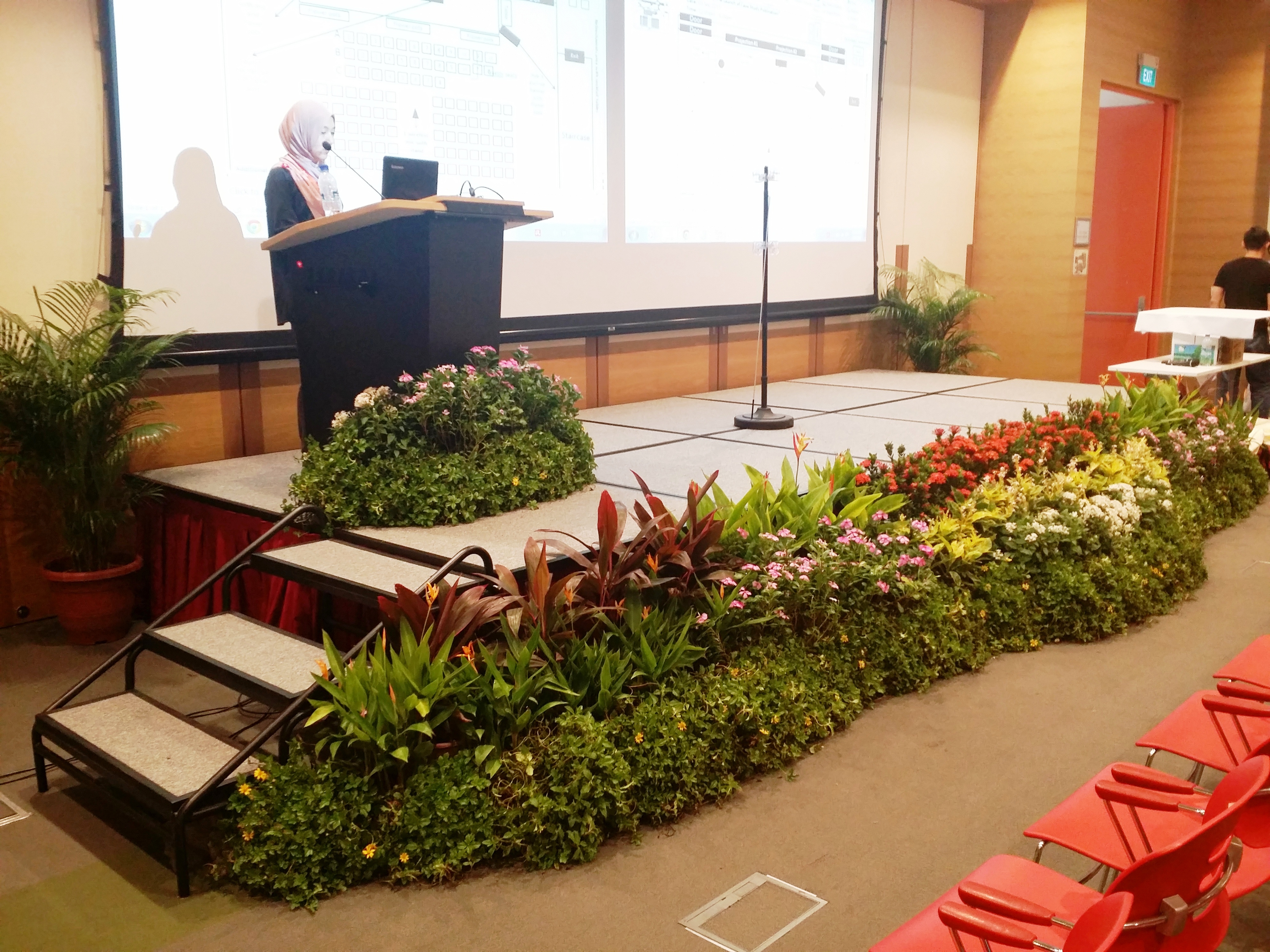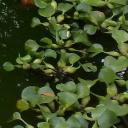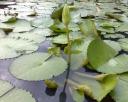March
2009
Water Plants
Floating Plants, Plant, Water Plants 
Water plants are traditionally divided into three categories : floating plants, shallow-water bog or marsh plants and submerged plants. Easy available from garden centers and through mail-order catalogues.
1) Floating Plants
There are two categories of floating plants : free-floaters, which have roots hanging freely in the water, and attached floaters, whose leaves float on the surface but whose roots are attached to the bottom. Floating plants are easy to care for and efficient natural water filters, removing large quantities of nitrogen, phosphate and other substances from the water. They compete with algae for nutrients, thereby minimizing the chance of algal overgrowths.
2) Shallow-water bog or marsh plants
Plants that grow in shallow water with most of the plant above the surface, are included in this category. Many produce vegetation that is quite lush and varied. Bog plants grown in pots and scattered along marginal areas are beautiful additions to pond. Popular plants include the arrowhead plant (Sagittaria latifolia), unbrella plant (Cyperus alternifolius), pickerel weed (Pontederia cordata), water iris (Iris spp), sweet flag (Acourus calamus), and horsetail (Equisetum hyemale).
3) Submerged Plants
Submerged plants are rooted on the bottom, with their leaves totally below the surface. These plants are often sold for use in freshwater aquariums. Common examples include Cabomba, Elodea, and Ludwigia. Although they are excellent for removing nutrients and carbon dioxide from ponds, they are quicky uprooted and eaten by koi.
4) Sub Plants
New plants to be update
- led light bulbs
- led light bulbs
- led light bulbs
- led light bulbs
- led light bulbs
- led light bulbs
- led light bulbs
- led light bulbs
- led light bulbs
- led light bulbs
- led light bulbs
- led light bulbs
- led light bulbs
- led light bulbs
- led light bulbs
- led light bulbs
- led light bulbs
- led light bulbs
- led light bulbs
- led light bulbs
- led light bulbs
- led light bulbs
- led light bulbs
- led light bulbs
- led light bulbs
- led light bulbs
- led light bulbs
- led light bulbs
- led light bulbs
- led light bulbs
- led light bulbs
- led light bulbs
- led light bulbs
- led light bulbs
- led light bulbs
- led light bulbs
- led light bulbs
- led light bulbs
- led light bulbs
- led light bulbs
- led light bulbs
- led light bulbs
- led light bulbs
- led light bulbs
- led light bulbs
- led light bulbs
- led light bulbs
- led light bulbs
- led light bulbs
- led light bulbs
- led light bulbs
- led light bulbs
- led light bulbs
- led light bulbs
- led light bulbs
- led light bulbs
- led light bulbs
- led light bulbs
LED Downlights/Ceiling Lights
cheap LED Downlights/Ceiling Lights
LED Downlights/Ceiling Lights outlet
LED Downlights/Ceiling Lights wholesale
LED Downlights/Ceiling Lights online
LED Downlights/Ceiling Lights online shop
LED Downlights/Ceiling Lights outlet online
cheap LED Downlights/Ceiling Lights outlet
cheap LED Downlights/Ceiling Lights wholesale
cheap LED Downlights/Ceiling Lights online
cheap LED Downlights/Ceiling Lights shop
suggesting that investors anticipate a bidding war.Both Dollar General and Dollar Tree have some capacity to go a little bit higher with the offer price, said Joseph Feldman, analyst at Telsey Advisory Group.Dollar stores have been a popular choice for low- and middle-income U.S. consumers in a weak economy. At the same time, Wal-Mart Stores Inc and other large retailers which serve a similar customer base have been struggling with weak sales amid a cutback in spending and a shift in preferences to stores nearer to home.The U.S. market for dollar stores grew 45.7 percent to $48.2 billion between 2008 and 2013 and is expected to grow 18 percent in the next five years, according to Euromonitor International.But the growth has recently started slowing due to intense competition, Kahn said.We have a tremendous amount of strength in the rural communities and we have things to learn in the metro, Dollar General Chief Executive Rick Dreiling said on a conference call. Family Dollar is just the reverse.The combined company would have nearly 20,000 stores across 46 U.S. states and annual sales in excess of $28 billion.It would also allow Dollar General to retain its No. 1 spot among U.S. dollar stores. Dollar Trees $8.5 billion bid for Family Dollar, announced on July 28, would have vaulted that merged company ahead of Dollar General.Combined, the three dollar chains annual sales total about $35 billion - less than a tenth of Wal-Marts $473 billion.Dreiling, who will postpone a retirement planned for next year to stay on as CEO of the combined company through May 2016, said Dollar General had faced stiffer competition from new Family Dollar stores than from Wal-Mart.Both Dollar General and Family Dollar offer goods at multiple price points, while Dollar Tree sticks rigidly to a $1 or less format. This - along with the location of Dollar General and Family Dollar stores - would make Dollar General a more likely buyer, analysts said.Family Dollars presence is biggest in Texas and the eastern United States. Texas is also home to more Dollar General stores than any other state - more than 1,000 stores, or about a tenth of the total.Family Dollar said on Monday it was reviewing Dollar Generals offer, but has not changed its recommendation in support for a merger with Dollar Tree.Family Dollar had agreed to a $74.50 per share cash and stock deal with Dollar Tree las
exas and the eastern United States. Texas is also home to more Dollar General stores than any other state - more than 1,000 stores, or about a tenth of the total.Family Dollar said on Monday it was reviewing Dollar Generals offer, but has not changed its recommendation in support for a merger with Dollar Tree.Family Dollar had agreed to a $74.50 per share cash and stock deal with Dollar Tree last month.Billionaire investor Carl Icahn, who in June took a 9.4 percent stake in Family Dollar, had pushed Family Dollar to sell itself to Dollar General.On Monday, Icahn said he was surprised by Family Dollars deal with Dollar Tree.He questioned whether Family Dollar CEO Howard Levines future role at Dollar Tree could have influenced the company to go ahead with the deal.Dollar Tree said last month that Levine would remain as Family Dollar CEO after the acquisition.Icahn has cut his stake in Family Dollar to 3.6 percent from 9.4 percent as of July 30.Activist investor Nelson Peltz-led Trian Partners was Family Dollars second-largest shareholder as of July 27 with a 7.34 percent stake.Dollar Tree declined to comment.Dollar Generals offer, made in a letter to Family Dollars board, represents a premium of 3.2 percent to Family Dollars Friday close.The enterprise value of the offer is $9.7 billion, higher than Dollar Trees $9.2 billion.Dollar Generals shares closed up 11 percent at $64.14, while Dollar Trees shares closed down 2.4 percent at $54.26.ANTITRUST CONCERNSDreiling, who said he would not have announced his retirement had he known a deal between Family Dollar and Dollar Tree was under way, said antitrust approval for Dollar Generals bid was not a concern.Dollar General is prepared to divest up to 700 retail stores to get regulatory approval for the deal, the same percentage that Dollar Tree had proposed.Edward Jones analyst Brian Yarbrough, however, said that more closings or divestitures might be needed.Any market where they are dominant, and they are the only two players, is going to be questioned, he said. Antitrust lawyer Jared Bona of Bona Law, however, said the deal was likely to pass regulatory muster without much trouble.I would be surprised if this deal is challenged under the antitrust laws because Dollar General is apparently willing to divest up to 700 retail stores to obtain antitrust approval. Stating that up front means they probably don



 ADV SIZE 160x160 USD180
ADV SIZE 160x160 USD180


















